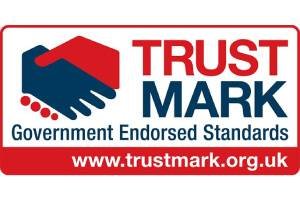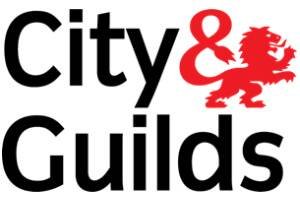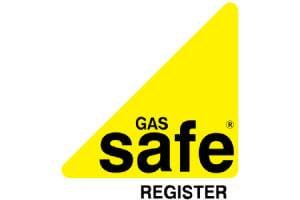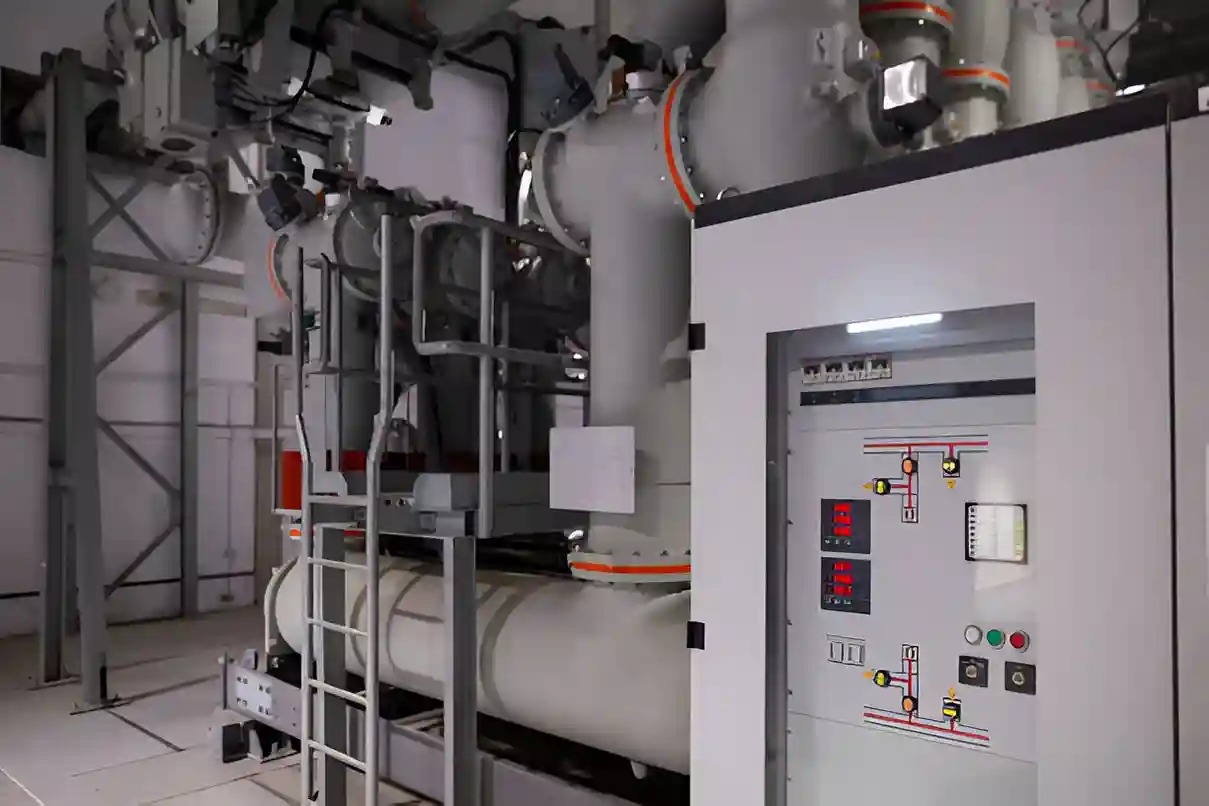
Understanding the EICR London cost is essential for landlords and businesses. With prices varying notably based on property specifics, many may find themselves unprepared for the financial implications. In addition, the necessity for regular inspections and additional expenses can complicate budgeting. What factors contribute to these costs, and how can property owners effectively manage them? Exploring these questions reveals the complexities of EICR expenses.
What Is an EICR London and Why Is It Important in London?
An Electrical Installation Condition Report (EICR) is a key document that assesses the safety and condition of electrical installations in properties throughout London. This report is essential for determining any dangers, such as faulty wiring or overloaded circuits, and ensuring that electrical systems comply with safety regulations.
Property owners and landlords are legally required to conduct EICRs at regular intervals, particularly in rental properties, to safeguard tenants and minimise the risk of electrical fires or shocks.
In a city like London, where properties range from historic buildings to modern apartments, the importance of an EICR London cannot be overstated. It provides peace of mind, confirming that installations are safe for use.
Additionally, an EICR can enhance property value by demonstrating a commitment to safety and compliance. Regular inspections and timely reports contribute to the overall integrity of electrical systems, promoting both safety and efficiency in urban living.
How Much Does an EICR London cost on Average?
The cost of obtaining an Electrical Installation Condition Report (EICR) in London varies based on several factors, including the size and type of property, as well as the experience of the electrician conducting the inspection.
On average, landlords and business owners can expect to pay between £100 and £300 for a standard residential property. Larger properties or commercial spaces may face higher fees, often ranging from £200 to over £600, depending on the complexity of the electrical installations.
In addition, if a property requires extensive remedial work identified during the EICR process, additional costs may arise.
It is also important to note that some companies may have a fixed pricing structure, while others charge based on the time spent on the inspection.
Key Factors That Affect the EICR London Cost
Several key factors influence the EICR London. Understanding these elements can help landlords and businesses budget effectively for their electrical safety inspections.
- Property Size: Larger properties typically require more time and resources to inspect, increasing the overall cost.
- Type of Property: Residential and commercial properties may have different pricing structures due to varying complexities in electrical systems.
- Condition of Wiring: Older or poorly maintained wiring may necessitate additional testing and repairs, which can elevate the final cost.
- Location: Certain areas in London may experience higher demand for EICR services, impacting pricing due to market fluctuations.
EICR London Costs for Landlords vs Homeowners in London
Cost considerations for EICR inspections in London differ markedly between landlords and homeowners.
Landlords typically bear higher costs due to the necessity of compliance with regulatory standards and the need for thorough inspections to guarantee tenant safety. The average price for an EICR for rental properties often ranges between £150 to £300, depending on property size and complexity. Additionally, landlords might need to conduct more frequent assessments, especially if they have multiple properties, which can increase overall expenditure.
In contrast, homeowners usually face lower costs, with inspections averaging between £120 to £250. Homeowners may opt for EICRs less frequently, often aligning them with property sales or major renovations.
Understanding these cost differences is essential for both parties, as it aids in budgeting and planning for future electrical safety needs. Ultimately, the financial implications of EICR inspections can considerably impact landlords and homeowners in distinct ways.
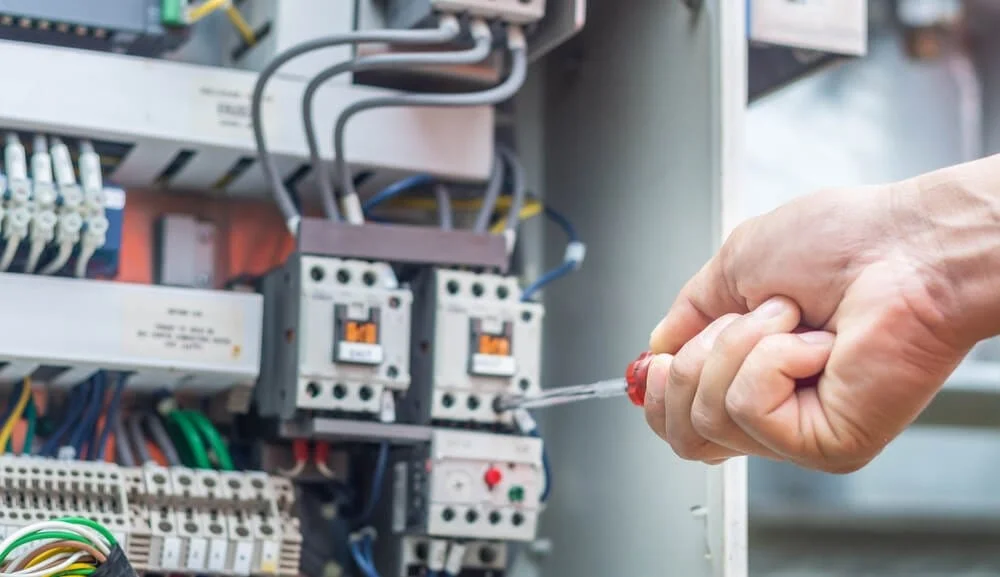
Commercial EICR London Cost / What Businesses Should Expect
Regularly, businesses in London must budget for Electrical Installation Condition Reports (EICRs) to guarantee compliance with safety regulations and protect their employees and customers.
The costs for commercial EICRs can vary widely based on several factors, and businesses should be prepared for the following:
- Size of the premises: Larger spaces typically face higher costs due to increased inspection time.
- Complexity of the electrical systems: Facilities with intricate electrical setups may require more thorough evaluations.
- Type of business: Industry-specific requirements can influence the overall pricing.
- Frequency of inspections: More frequent assessments may lead to higher cumulative expenses.
Understanding these variables will help businesses allocate their budgets effectively, ensuring compliance without unexpected financial strain.
Additional Expenses to Consider with an EICR London
While budgeting for an Electrical Installation Condition Report (EICR) in London, businesses should also consider additional expenses that may arise beyond the initial inspection fee. These costs can markedly impact the overall budget and should be accounted for to guarantee compliance and safety.
| Expense Type | Description | Estimated Cost |
|---|---|---|
| Remedial Work | Repairs for failing components | £100 – £1,000+ |
| Follow-Up Inspections | Required re-inspections after repairs | £50 – £150 |
| Certification Fees | Fees for issuing compliance certificates | £30 – £100 |
| Emergency Repairs | Urgent fixes needed for safety compliance | £200 – £1,500+ |
| Travel Expenses | Charges for technicians travelling to the site | £20 – £100 |
Understanding these potential expenses helps businesses maintain electrical safety and comply with legal obligations effectively.
How Often Do You Need an EICR London?
Determining the frequency of EICR London is significant for maintaining safety and compliance in electrical systems. The recommended intervals for conducting EICRs vary based on several factors, including the type of property and usage.
Regular assessments help discover threats and guarantee that electrical installations meet legal standards.
Landlords and businesses should consider the following guidelines for EICR frequency:
- Domestic properties: Every 10 years or at change of occupancy
- Commercial properties: Every 5 years or as specified by insurance
- Houses in multiple occupation (HMOs): Every 5 years
- New installations: Within the first 5 years of installation
Adhering to these recommendations not only enhances safety but also facilitates compliance with legal obligations, ultimately protecting tenants and employees alike.
How to Find Affordable EICR London Services
Finding affordable EICR services in London can be a straightforward process when individuals know where to look. First, comparing quotes from multiple certified electricians is essential. Many companies offer free estimates, allowing landlords and businesses to assess their options effectively.
Online platforms and review websites can provide insights into service quality and pricing, making it easier to discover reputable providers. Additionally, seeking recommendations from other landlords or local business owners can lead to trustworthy contacts.
Engaging with professional associations or networks may also yield valuable referrals. It’s important to evaluate what is included in the service, as the cheapest option may not always offer the best value.
Finally, being aware of seasonal promotions or discounts may provide further savings opportunities. By employing these strategies, individuals can secure affordable EICR services without compromising on quality or safety.
Why Investing in an EICR Is Worth the Cost
Investing in an Electrical Installation Condition Report (EICR) proves to be a prudent decision for property owners, as it guarantees the safety and compliance of electrical systems.
The benefits of obtaining an EICR outweigh the costs involved, providing significant value for landlords and businesses alike.
- Enhanced Safety: Recognise possible risks, ensuring the safety of tenants and occupants.
- Legal Compliance: Meets regulatory requirements, reducing the risk of legal issues.
- Insurance Benefits: Can lead to lower insurance premiums by demonstrating proactive safety measures.
- Increased Property Value: A well-documented EICR can enhance property attractiveness to prospective buyers or tenants.
Property size and type impact on EICR London cost
The EICR London cost is considerably influenced by the size and type of the property being assessed. Larger properties generally incur higher costs due to the increased complexity and the number of circuits and installations that require evaluation.
For example, a sprawling commercial building will necessitate more time and resources to inspect compared to a small residential flat.
Additionally, the type of property plays an important role in determining EICR costs. Older properties may require more extensive inspections and repairs, as outdated wiring and systems can pose safety risks.
Conversely, newer constructions might adhere to current standards, potentially resulting in lower assessment costs.
Ultimately, both property size and type are significant factors that directly impact the overall expense of obtaining an EICR, making it essential for landlords and businesses to take these elements into account when budgeting for electrical safety compliance.
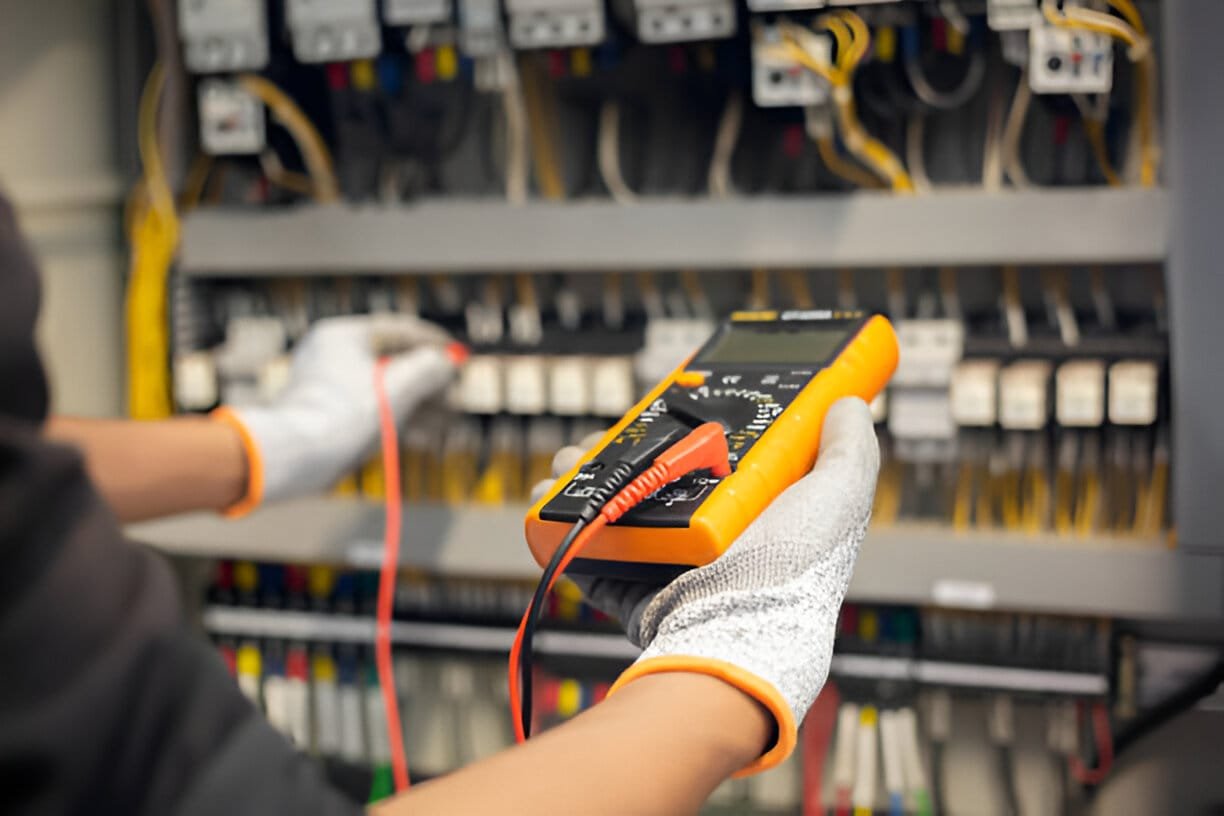
The difference between residential and commercial EICR London costs
While both residential and commercial properties require Electrical Installation Condition Reports (EICR) to guarantee safety and compliance, the EICR London costs associated with these assessments can vary considerably.
Residential EICR assessments typically focus on smaller, simpler wiring systems, while commercial properties often involve more complex electrical installations.
Key differences in costs include:
- Property Size: Commercial properties generally have larger electrical systems, leading to higher assessment costs.
- Complexity: Commercial installations may include specialised equipment, necessitating more extensive inspections.
- Frequency of Inspections: Commercial properties may require more frequent assessments, increasing overall costs.
- Regulatory Standards: Businesses may need to adhere to stricter compliance standards, impacting pricing.
Understanding these differences helps landlords and business owners budget appropriately for EICR assessments, ensuring their properties remain safe and compliant with regulations.
Hidden costs: remedial work and certificate re-issue fees
Hidden costs often emerge after receiving an EICR report, particularly in the form of remedial work and certificate re-issue fees. Landlords and business owners may initially budget for the assessment itself, but can be blindsided by additional expenses.
Remedial work is necessary when the inspection uncovers safety risks or non-compliance issues. This work can vary greatly in cost, depending on the extent of the issues identified.
Additionally, if remedial actions are taken, a re-issue of the EICR certificate is often required to validate that corrections have been made. This process may incur further fees, adding to the overall financial burden.
Understanding these hidden EICR London costs is fundamental for landlords and businesses to effectively manage their budgets and guarantee compliance with electrical safety regulations. Proper planning can alleviate these unexpected expenses and facilitate a smoother experience when addressing electrical safety obligations.
Frequently asked questions.
Conclusion
In summary, understanding the EICR London cost is essential for landlords and businesses alike. By considering factors such as property size, type, and condition, stakeholders can effectively budget for these necessary inspections and any potential follow-up work. Investing in an EICR not only guarantees compliance with legal requirements but also enhances property safety and value, making it a prudent financial decision for all property owners.


